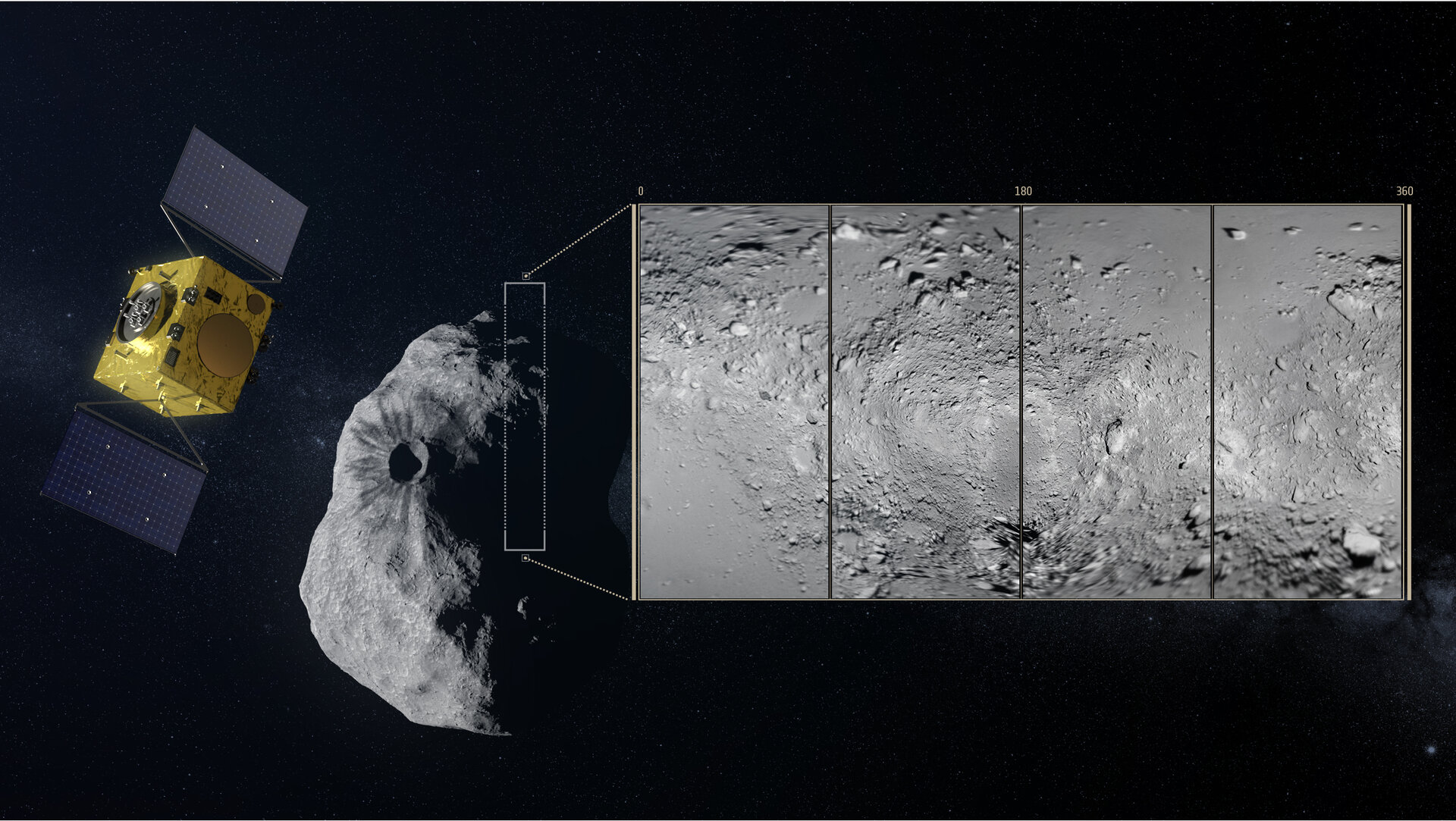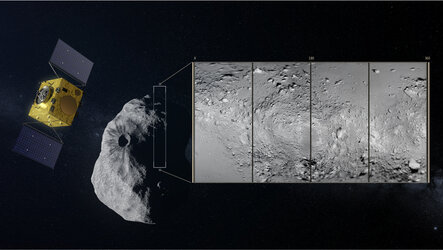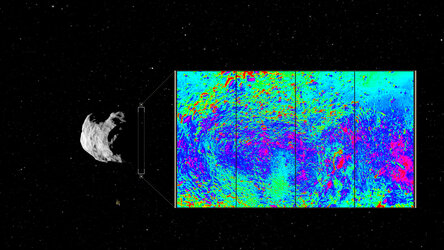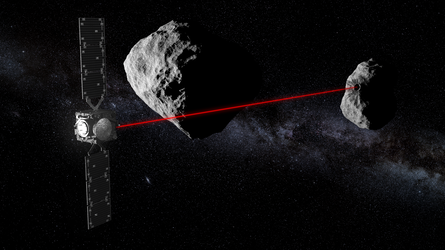VIS
The Visual Imaging System on AIM would be used both for guidance, navigation and control functions and to perform scientific measurements. In its scientific role it will be imaging the target asteroid system from multiple fixed positions and from various distances during the course of the AIM asteroid observation phases.
The purpose of the measurements is to provide information on the binary asteroid dynamics and – especially for the smaller Didymoon, DART´s target – its physical characteristics.
The VIS would be used to accurately determine Didymoon’s shape and size, as well as its dynamical state (period, orbital pole, spin rate) both before and after impact. It would also be able to image the bulk surface features, search for dust presence and perform real-time ejecta observations. After impact the VIS would be used to determine the crater density and compare the geomorphology of both Didymain and Didymoon.
| Primary objectives (a resolution of about 0.5 m will be required) | |
| P1 | To determine Didymoon's mass with an accuracy of at least 10% (goal 1%): range measurements will be carried out by landmark recognition, from which the mass of a body can be determined, the accuracy does depends on the resolution of the VIS camera (goal is a resolution of 1 m in height with respect to the centre of mass for any given landmark) |
| P2 | To estimate the volume of Didymoon: for this a close-shaped model needs to be obtained with an accuracy of 2 m in height and less than 5 m in spatial resolution with respect to the centre of mass |
| P3 | To determine the orbital period of the binary system and Didymoon's semi-major axis with an accuracy of 1% |
| P4 | To characterise Didymoon's surface with a resolution of 50 cm/pixel |
| P5 | To image Didymoon's surface with a vertical and horizontal precision of 10 cm locally on approx. 10% of the surface |
| Secondary objectives (same resolution requirements as for the primary objectives) | |
| S1 | To measure Didymoon's shape and mass after DART impact with an accuracy of 2 m in height and 5 m in spatial resolution with respect to the centre of mass |
| S2 | To determine the system's orbital period and Didymoon's semi-major axis after DART impact and measure other orbital parameters before and after impact with the same accuracy (1%) |
| S3 | To characterise Didymoon's surface after DART impact at a resolution of 50 cm/pixel |
| S4 | To characterise Didymoon's surface after DART impact with a vertical and horizontal precision of 10 cm locally on approx. 10% of the surface |
| S5 | To perform real-time observations of impact ejecta |
| S6 | To determine and compare the crater density and geomorphology of Didymain and Didymoon |
| S7 | To support the study of the chemical and mineralogical properties of the surface of both asteroids: to achieve this a wide bandwidth camera with photometric bandpass (in combination with the TIRI measurements) should be chosen or one with multiple filters |
| S8 | To search for the possible presence of dust in the surrounding of Didymoon: this can be done by carrying out long-term exposures |








